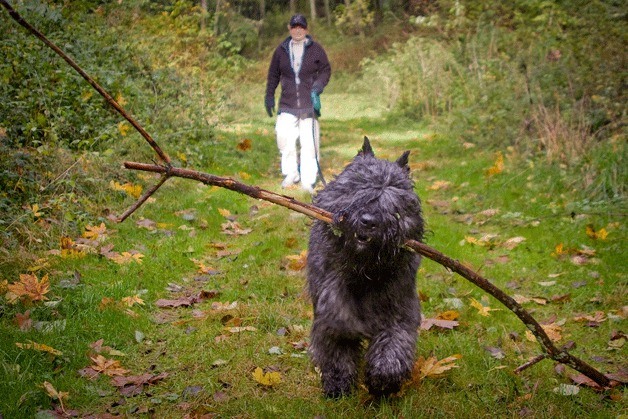Since moving to Whidbey Island 30 years ago, Maureen Murphy has been plucking chanterelles from the woods of South Whidbey.
As a nature lover, horticulturalist and botanist, Murphy loves the experience of heading outdoors on a hunt for edible mushrooms.
“To get out into the forest is a really beautiful experience,” Murphy said. “The smells, the fragrances are really potent after the first fall rain.”
It is at this time, after the fall’s first precipitation that the mushrooms begin popping up and Murphy knows where to look.
The fungi is quite particular about its requirements for growth, such as its lighting preferences. It has to be light, but not too light, Murphy said.
In addition, like a good bottle of wine, the forest must be aged just right.
The mushrooms won’t grow in young, disturbed forest, she said, as they feast on decayed organic matter of a certain age.
Central Whidbey, with its prairie and open areas, lacks the habitat that they prefer, but South Whidbey is prime habitat for growth.
Unlike most hobbies trying to attract new blood, Murphy cautions against leaping into mushroom hunting before learning which are edible, and which are not.
Taking time to learn the basics will go a long way toward keeping you out of trouble, she said.
Murphy first learned how to identify mushrooms when living near the Oregon coastal mountains. Her friends, experienced in the art and science of finding these seasonal delicacies, taught her how to locate the edible fungi and avoid ones that could sicken or kill her.
“I don’t take any risks,” Murphy said, adding that being lazy can gave fatal consequences. “You have to be really, really, really sure.”
Look-alike mushroom species can appear to be the edible kind, but on closer inspection small details, like gill arrangements, alert the vigilant mushroom hunter to the imposter.
Murphy advises newbie foragers to partner with someone with experience and learn from them. Using a book to distinguish between varieties to ingest can end badly, she warns.
And even the seasoned searcher can die from a mistake if they get complacent and fail to double-check that they have a safe variety.
But by paying attention and sticking with what she knows, Murphy said she is confident in her mushroom picking. She said she appreciates the culinary reward once these fungi get cooked with butter and garlic, or added to a soup.
Certain rules apply to the hunt, rules that veteran hunters know, observe and teach to others.
“Don’t get greedy,” Murphy said about trying to scoop up all of the mushrooms from one location.
Over-harvesting an area can kill off that colony, or at the very least weaken it severely, she said. It removes the fungi that would sporulate, eliminating the ability to seed an area.
Hunters also should walk lightly and watch where they step, Murphy said. Tromping around is bad etiquette; it’s best to be respectful of the natural environment.
As for trying to cut corners in searching for a tasty treat, asking where someone else has found their mushrooms is a big faux pas.
“Don’t ask, don’t tell, but share,” Murphy said, adding that it’s OK to share the secret with a very close, very trusted friend. “It’s unwise to broadcast. If word gets out, a lot of people could tromp through and they could wreck it. A lot of people don’t know how to step lightly.”
Truffle hunting year round
Soon more foragers could be entering Whidbey’s woods in a search for a pungent fungus, one that is available all year round — the truffle.
But the hunt for this one requires a trained snout to sniff it out. Covered by soil and debris, a trained dog can smell the distinctive odor and alert its handler to the presence of these culinary treasures.
“We don’t know where they are,” said Dr. Georgia Edwards, one of the instructors with the K9 nosework class sponsored by the South Whidbey Parks & Recreation District.
“But the dogs do. It is amazing what dogs can really do,” Edwards continued.
An introductory class sponsored by the parks district Saturday, Nov. 10, will expose people to this hobby. It will be taught by Elizabeth Kalik and Kelly Slocum of Northwest Truffledogs. A more in-depth, 12-week course will begin in January.
People and their four-legged pals have been receptive to the ongoing K9 nosework classes that have taught doggy nostrils how to scent clove and birch, said Carrie Monforte, program coordinator for the parks district, about the popular program. The truffle program is a natural extension to expand the pup’s scent pallet, she said.
Truffles grow from British Columbia south to Napa in California and the fungi grows around 10- to 20-year-old Douglas fir.
According to Edwards, truffles have already been found on the northern end of Whidbey, and she believes that more locations are waiting to be discovered.
In addition to teaching about the truffle’s habitat and how to find these treats, the course will also teach how to do it sustainably and minimize the ecological impact. A trained dog, once it picks up the scent, will lightly tap its paw on the ground to alert its handler, she said, rather than digging a big hole.
“There are ethics to doing this,” Edwards said.
Today’s class is limited to 15 canine/handler teams and an additional 20 two-legged auditors. Deadline was Friday, Nov. 9, unless slots remained open.
“This is a fun way to get outside into the woods with your dog,” said Edwards.


